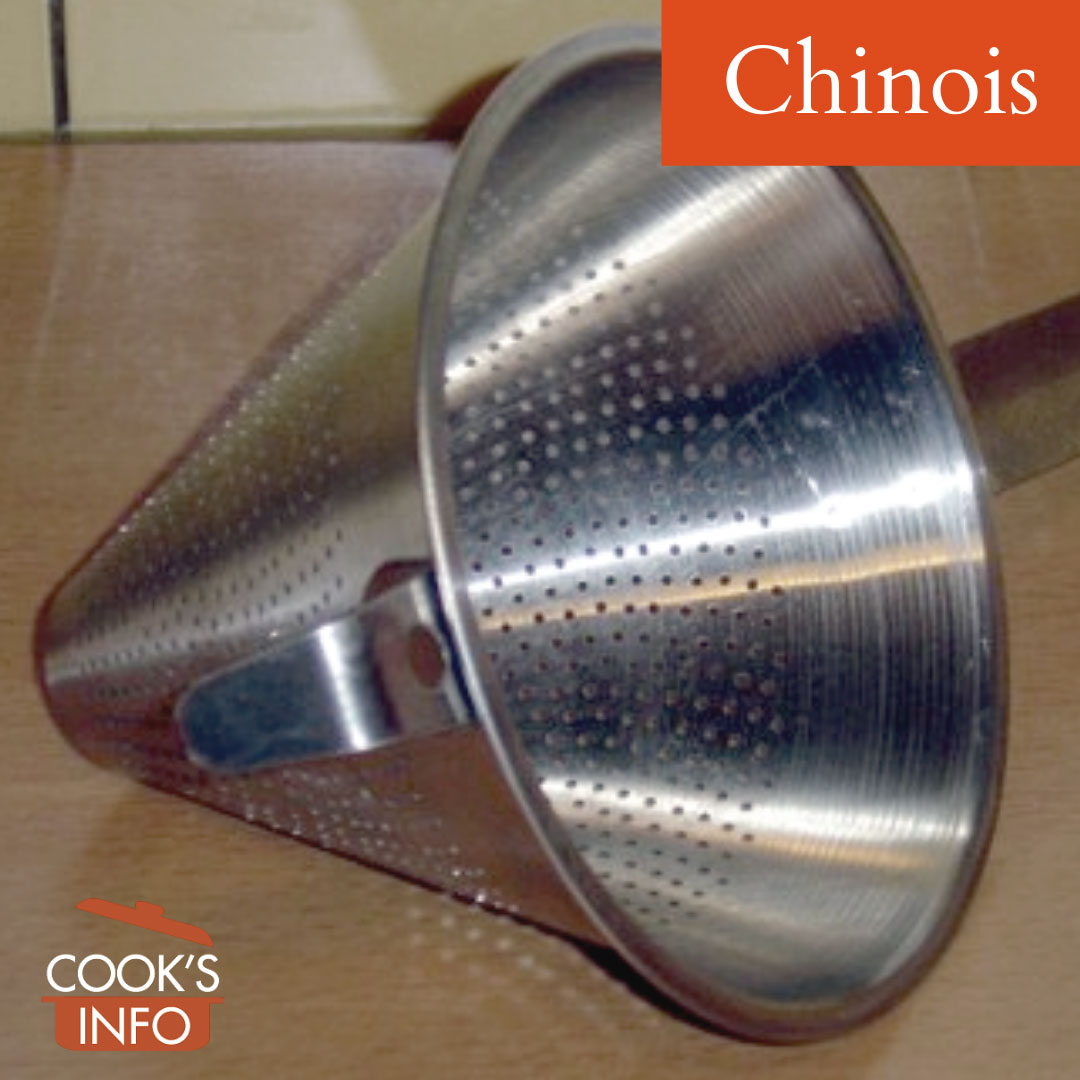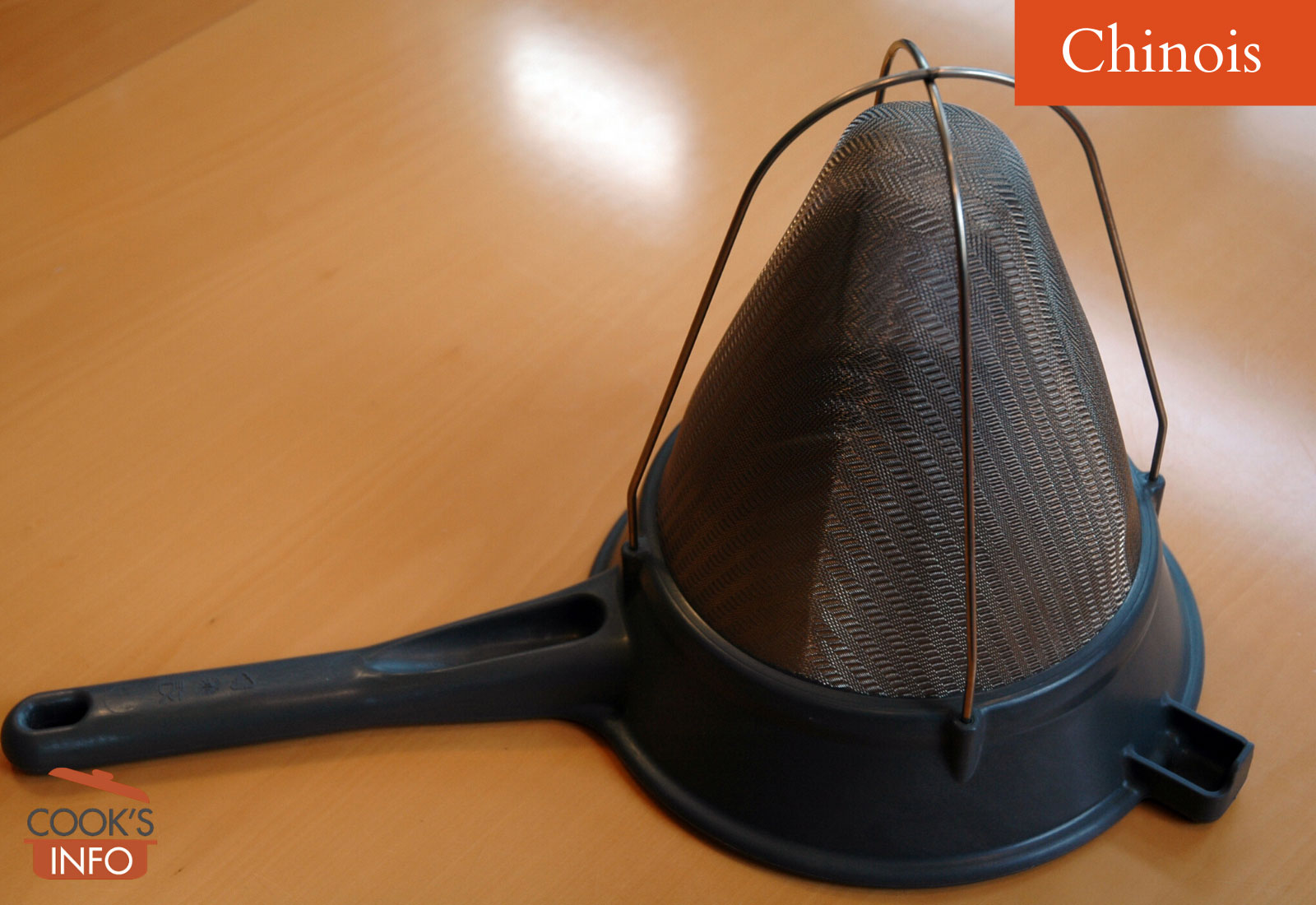
Chinois aka China cap. Laurent van Roy / wikimedia / 2014 / CC BY-SA 3.0
A chinois strainer (aka China cap) is a cone shaped strainer, used to purée soft, cooked foods for soups, stocks and sauces, coulis, and jams, etc. Bones, cartilage, lumps, fibres, tiny seeds and skins remain behind.
A chinois has solid sides with small, grain-sized perforations in them, or with the bottom half being a fine mesh. You use a wooden cone-shaped pestle to force food through the perforations, thus puréeing it.
Some models come with the pestle, with others you buy it separately.
Stainless steel models vary in width from 10 to 25 cm (4 to 10 inches), with a fine mesh 1.6 mm (1/16 inches) or extra fine .8 mm (1/32 inches.) Some have perforations going only half way or so up the side.
Some have hooks that allow you to hang them on the side of a pot or bowl to hold them as you are working; others either come with a stand to stand them in while you are working, or will work with a stand that you can buy separately. You can also stand them up in a bowl or pot, if the size is right.
Mesh-bottomed ones usually have a stainless steel band around them, about 2 to 3 cm wide (about an inch) and suspended 1 cm (a half inch) or so above the mesh, that goes straight down one side, over the bottom and back up the other side. Though referred to as a “guard”, its purpose to give added support to the chinois mesh as you are pressing against it.
To use one, you roll the pestle around the inside, pushing the juice and liquid through the mesh.
The result, though, can be too fine to use on some soups and sauces that are supposed to have a lot of pulp in them, such as tomato sauce — a chinois would hold too much of the pulp behind, leaving you with just red-coloured water.
Chinois are usually expensive.
Don’t leave them in a sink and then toss heavy pots on them, as you will damage them.
A chinois is similar in appearance to a ricer.

Chinois aka China cap. Sashafklein / wikimedia / 2007 / CC BY-SA 3.0

